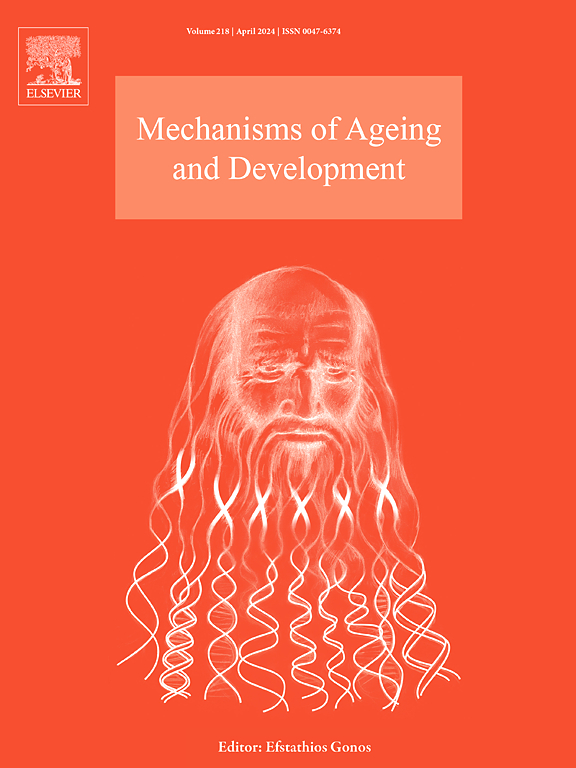The stress-responsive cytokine GDF-15 and sarcopenia: A systematic review and meta-analysis on aging muscle decline
IF 5.1
3区 医学
Q2 CELL BIOLOGY
引用次数: 0
Abstract
Background
Given the increasing interest for Growth Differentiation Factor-15 (GDF-15) in muscle decline, this study aims to evaluate the association between circulating levels of GDF-15 and muscle mass and sarcopenia through a systematic review and meta-analysis.
Methods
The research, in accordance with PRISMA and MOOSE guidelines, involved PubMed, Embase, and Cochrane Libraries. Two meta-analyses were performed: (1) comparison of GDF-15 levels in sarcopenic vs non-sarcopenic individuals; (2) correlation between GDF-15 and muscle mass.
Results
A total of 7 studies met the inclusion criteria (total n = 2344) enrolling both adults aged ≥ 60 years (6/7 studies) and a younger cohort (42 years [IQR 31.8–51]). The first meta-analysis, based on 4 studies (n = 1393), showed significantly higher levels of GDF-15 in sarcopenic individuals (r = 0.482). The second meta-analysis, involving 4 studies (n = 1400), found a significant inverse correlation between GDF-15 and muscle mass (r = -0.221).
Conclusions
Sarcopenic individuals had higher circulating GDF-15. Together with the inverse correlation between GDF-15 and muscle mass observed, these findings show a small-to-moderate association between elevated GDF-15 and sarcopenic phenotypes in older adults. However, the limited number of studies and high heterogeneity for the sarcopenia comparison warrant cautious interpretation and underscore the need for larger, longitudinal investigations.
应激反应细胞因子GDF-15和肌肉减少症:衰老肌肉衰退的系统回顾和荟萃分析。
背景:鉴于人们对生长分化因子-15 (GDF-15)在肌肉衰退中的作用越来越感兴趣,本研究旨在通过系统回顾和荟萃分析来评估循环中GDF-15水平与肌肉质量和肌肉减少症之间的关系。方法:根据PRISMA和MOOSE指南,研究涉及PubMed、Embase和Cochrane图书馆。进行了两项荟萃分析:(1)比较肌肉减少症患者与非肌肉减少症患者的GDF-15水平;(2) GDF-15与肌肉质量的相关性。结果:共有7项研究符合纳入标准(总n=2,344),纳入年龄≥60岁的成人(6/7项研究)和年龄较小的队列(42岁[IQR 31.8-51])。基于4项研究(n=1393)的第一项荟萃分析显示,肌肉减少症患者的GDF-15水平显著较高(r=0.482)。第二项荟萃分析涉及4项研究(n= 1400),发现GDF-15与肌肉质量之间存在显著的负相关(r= -0.221)。结论:肌少症患者有较高的循环GDF-15。再加上观察到的GDF-15与肌肉质量之间的负相关,这些发现表明,老年人GDF-15升高与肌肉减少表型之间存在小到中度的关联。然而,有限的研究数量和肌肉减少症比较的高度异质性需要谨慎的解释,并强调需要更大规模的纵向研究。
本文章由计算机程序翻译,如有差异,请以英文原文为准。
求助全文
约1分钟内获得全文
求助全文
来源期刊
CiteScore
11.10
自引率
1.90%
发文量
79
审稿时长
32 days
期刊介绍:
Mechanisms of Ageing and Development is a multidisciplinary journal aimed at revealing the molecular, biochemical and biological mechanisms that underlie the processes of aging and development in various species as well as of age-associated diseases. Emphasis is placed on investigations that delineate the contribution of macromolecular damage and cytotoxicity, genetic programs, epigenetics and genetic instability, mitochondrial function, alterations of metabolism and innovative anti-aging approaches. For all of the mentioned studies it is necessary to address the underlying mechanisms.
Mechanisms of Ageing and Development publishes original research, review and mini-review articles. The journal also publishes Special Issues that focus on emerging research areas. Special issues may include all types of articles following peered review. Proposals should be sent directly to the Editor-in-Chief.

 求助内容:
求助内容: 应助结果提醒方式:
应助结果提醒方式:


